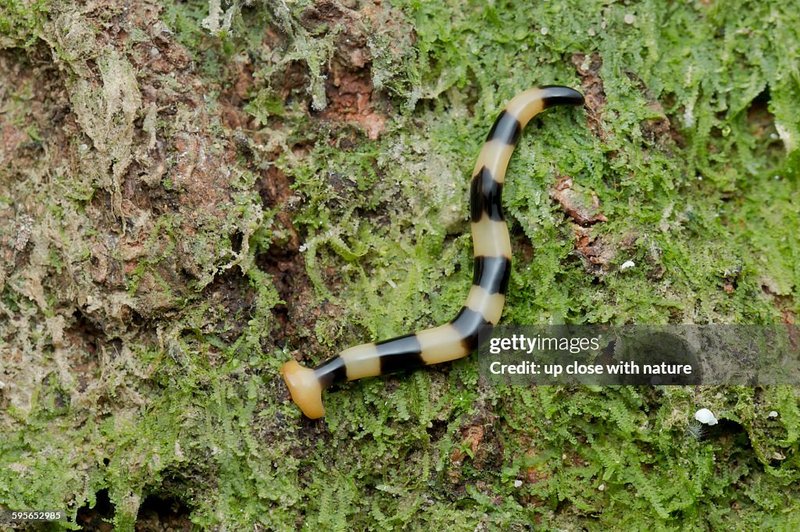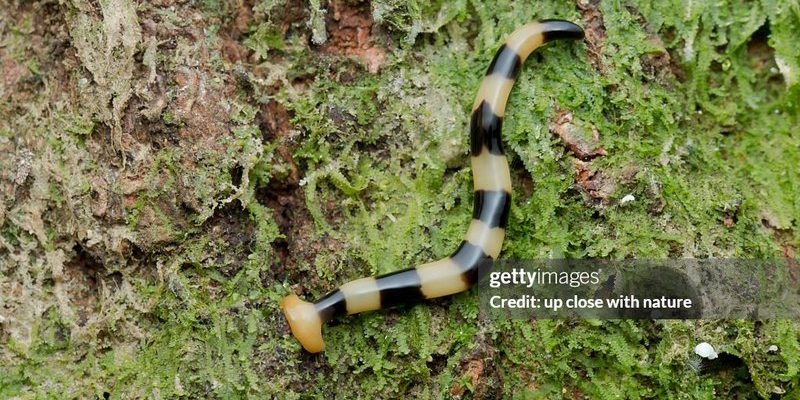
Imagine if you will, a worm that looks like a small, ribbon-like creature with a unique hammer-shaped head. That’s the Malayan hammerhead worm for you! Found in the damp, tropical regions of Southeast Asia, particularly Malaysia, this worm is a predator of other smaller invertebrates. Its unusual shape isn’t just for show; it’s an adaptation that helps it thrive in its environment. Let’s dig deeper into why these worms matter so much to the ecosystem.
What Is the Malayan Hammerhead Worm?
The Malayan hammerhead worm, scientifically known as Bipalium kewense, is part of the class Turbellaria, which consists of flatworms. These worms can grow quite large, often reaching lengths of up to 30 cm (around a foot). Their distinctive hammer shape isn’t just a quirky trait; it’s a remarkable evolutionary adaptation. This shape helps them navigate through their environments, allowing them to hunt efficiently.
You might be wondering how they move around or how they get their food. Well, they glide smoothly over surfaces using a wave-like motion. This helps them blend into their surroundings while they search for smaller worms, slugs, and other invertebrates to feast on. This predation plays a key role in maintaining population balance within their ecosystem.
Why Are Hammerhead Worms Important to the Ecosystem?
The ecological importance of the Malayan hammerhead worm can’t be understated. These worms serve as both predators and prey within their environment. By hunting smaller invertebrates, they help keep those populations in check. Without natural predators like the hammerhead worm, certain species could overpopulate, leading to an imbalance in the ecosystem.
Moreover, their presence can indicate a healthy environment. Healthy ecosystems tend to support a variety of species, including hammerhead worms. If you spot one in the wild, it’s often a good sign that the local ecosystem is thriving. So, in a way, they act as a barometer for environmental health.
The Role of Hammerhead Worms in Soil Health
One of the most fascinating aspects of the Malayan hammerhead worm is their contribution to soil health. You might think of earthworms as nature’s tillers, but hammerhead worms play a different, yet crucial role. As they hunt and consume smaller organisms, they contribute to the breakdown of organic matter, which enriches the soil.
Through their feeding behavior, these worms help regulate the population of other soil-dwelling organisms. This process not only promotes biodiversity but also enhances nutrient cycling. A diverse soil ecosystem is vital for plant health and growth. Healthier plants mean better food sources for animals, creating a balanced food web.
Potential Threats to the Malayan Hammerhead Worm Population
Despite their importance, the Malayan hammerhead worm faces several threats. Habitat loss due to urbanization and agricultural expansion is a significant concern. As wetlands and natural habitats are drained or altered, these worms lose their homes.
Additionally, pollution from pesticides and chemicals can severely impact their populations. These pollutants can disrupt the delicate balance of the ecosystems in which hammerhead worms thrive. If their populations decline, the effects can ripple through the food web, affecting many other species.
Conservation Efforts for Hammerhead Worms
Conservation efforts for the Malayan hammerhead worm are crucial. By protecting their natural habitats, we can help maintain their populations. This can involve setting aside conservation areas as well as promoting sustainable farming practices that don’t rely on harmful pesticides.
Education plays a significant role, too. Teaching communities about the ecological importance of the Malayan hammerhead worm can foster a sense of responsibility toward the environment. When people understand how these small creatures impact larger ecosystems, they may be more inclined to protect their habitats.
What Can You Do to Help?
You don’t have to be a scientist to make a difference. Here are some simple steps anyone can take to help protect the Malayan hammerhead worm and its habitat:
- Practice sustainable gardening: Avoid using harmful chemicals and pesticides in your garden. Opt for natural alternatives that won’t harm local wildlife.
- Support conservation initiatives: Whether it’s donating to environmental charities or volunteering for local clean-up efforts, every little bit helps.
- Educate others: Share what you’ve learned about the Malayan hammerhead worm. The more people know, the better chance these worms have for survival.
The Bottom Line: Why the Malayan Hammerhead Worm Matters
The Malayan hammerhead worm may seem small and insignificant, but its role in the ecosystem is anything but trivial. By controlling populations of other invertebrates and contributing to soil health, these worms help maintain the balance of their environment. Protecting them and their habitat is essential not just for their survival but also for the health of broader ecosystems.
In a world where larger species often steal the spotlight, it’s crucial to appreciate the small, often-overlooked creatures like the Malayan hammerhead worm. They remind us that every organism, no matter how tiny, has a part to play in our planet’s intricate tapestry of life. So next time you think about ecological health, remember the hammerhead worm and all the unseen work it does.

